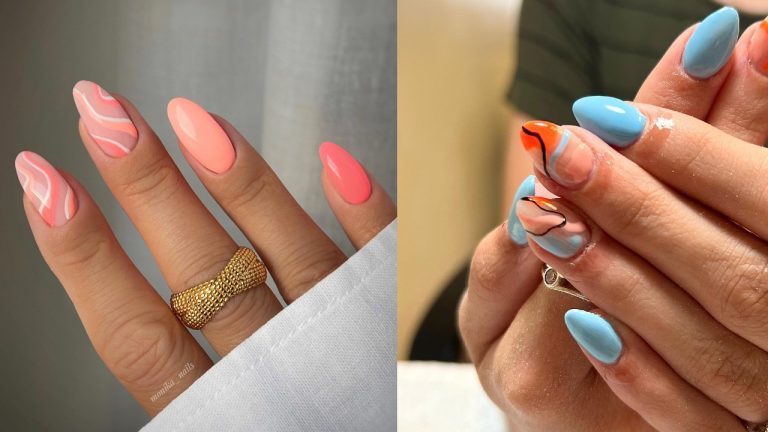Have you ever wondered why we’re “green with envy” instead of purple? Or why we “feel blue” when we’re sad, rather than, say, orange? Our language is a vibrant tapestry woven with colorful phrases that we use every day without a second thought. But these color idioms aren’t just random paint splatters on the canvas of our vocabulary—they’re brushstrokes of history, culture, and human psychology.
Let’s start a fun trip into some well-known sayings about colors. We’ll look at where these sayings come from and the interesting stories behind them. Get ready, word lovers and color fans—we’re about to dive into some colorful language!
1. Feeling Blue
When you’re feeling down, you might say you’re “feeling blue.” But why blue? Why not brown, which seems like a much more depressing color? (No offense to brown, of course—you’re great on teddy bears and in coffee!)
The origins of this azure expression are as deep as the ocean blue. Some linguists believe it stems from the old custom of ships flying blue flags and painting a blue band around the hull when a captain or officer died. Others point to the use of indigo dye, which in the 16th century was associated with the devil and melancholy.
Regardless of its exact origin, the link between blue and sadness is so ingrained that it spawned an entire genre of music. So next time you’re belting out a blues song, remember—you’re part of a long tradition of azure anguish!
2. Green with Envy
Ever been so jealous you turned green? No? Well, neither has anyone else, but that doesn’t stop us from using this verdant idiom to describe intense jealousy.
We can thank the Bard himself, William Shakespeare, for popularizing this phrase in “Othello.” But the association between green and envy goes back even further. In ancient Greece, green was associated with bile, which was thought to increase when a person was envious.
So, the next time you’re eyeing your neighbor’s new car with a twinge of jealousy, just remember—you’re not turning green, you’re just channeling your inner ancient Greek!
3. Caught Red-Handed
This crimson idiom paints a vivid picture, doesn’t it? You can almost see the guilty party, hands dripping with… well, let’s not get too graphic.
The phrase likely originated in 15th century Scotland, where “red hand” was the term for someone caught in the act of murder. The color, of course, referred to the blood on the killer’s hands. Over time, it expanded to include any sort of wrongdoing, not just the murderous kind.
So, the next time you catch someone with their hand in the cookie jar, you can dramatically exclaim, “Caught red-handed!” Just maybe keep the volume down if you’re in public—people might get the wrong idea.
4. White Lie
Not all lies are created equal, at least according to our color-coded morality. A “white lie” is considered harmless or even beneficial, in contrast to its more nefarious cousin, the “black lie.”
This idiom plays on the longstanding association of white with purity and innocence. It’s the color of wedding dresses, doves, and apparently, socially acceptable fibs.
Remember, though—even white lies can leave a mark. Use them sparingly, or you might find your nose growing like Pinocchio’s. (Now there’s a character who could have used a few white lies!)
5. Golden Opportunity
When something is described as “golden,” you know it’s good. A “golden opportunity” is a chance so valuable, you’d be foolish to pass it up.
This idiom draws on the perceived value and rarity of gold. Just as you wouldn’t walk past a gold nugget lying on the street, you shouldn’t let a golden opportunity slip through your fingers.
Fun fact: If you actually found a gold nugget on the street, that would be both a literal and figurative golden opportunity. Talk about striking gold!
6. Paint the Town Red
When you’re planning a wild night of celebration, you might announce your intention to “paint the town red.” But unless you’re planning some questionable acts of vandalism, you’re probably not actually going to be wielding any paintbrushes.
This vibrant idiom might have its roots in a literal act of painting. Legend has it that in 1837, the Marquis of Waterford and a group of friends had a wild night out in Melton Mowbray, England, which culminated in them actually painting several buildings red.
Whether or not this story is true, it’s a colorful tale that perfectly captures the exuberance and slight recklessness implied by the phrase. So, the next time you’re planning to paint the town red, maybe leave the actual paint at home—unless you’re prepared for some serious consequences!
7. Black Sheep
In every family, there’s often one member who doesn’t quite fit in—the “black sheep.” But why black? And why a sheep?
This idiom comes from the world of sheep farming, where black sheep were considered less valuable because their wool couldn’t be dyed. A black sheep in a flock of white ones stood out, much like that cousin who always shows up to family reunions in full Gothic regalia.
Remember, though—being different isn’t always bad. In a world of white sheep, sometimes it pays to be the black sheep. Just ask any successful entrepreneur or artist!
8. Yellow-Bellied
If someone calls you “yellow-bellied,” they’re not commenting on your questionable fashion choices or your jaundiced appearance. They’re calling you a coward.
This colorful insult might come from the yellow-bellied water snake, which plays dead when threatened. Alternatively, it could be linked to the idea of bile or humors in medieval medicine, where yellow bile was associated with cowardice.
Either way, it’s not a compliment. But hey, if someone calls you yellow-bellied, you could always retort that you’re just channeling your inner water snake. That’ll show ’em!
Wrapping Up
Language is a living, breathing thing, constantly evolving and taking on new hues. These color idioms are just a small splash in the vast ocean of our linguistic palette. They remind us that our words are not just tools for communication, but windows into our history, culture, and the quirky way our minds work.
So, the next time you use one of these colorful phrases, take a moment to appreciate the rich tapestry of meaning behind it. And who knows? Maybe you’ll be inspired to coin the next great color idiom. “Feeling mauve,” anyone?
Remember, life is too short for monochrome thinking. So go out there and live your life in full, vivid color!






